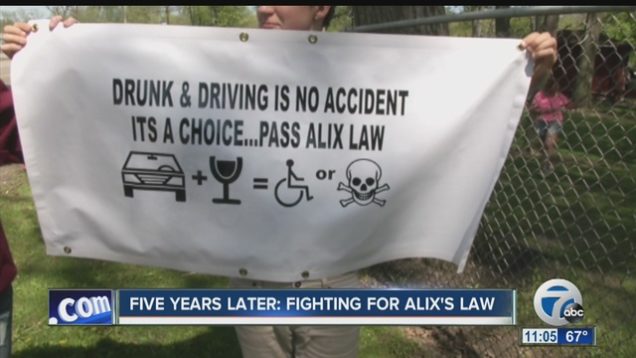Tagged: New York Senate
New York State’s Missed Opportunity On Early Voting Propositions
It’s no secret that the United States has one of the lowest voter turnout rates of any established democracy. Data provided by the Pew Research Center shows that out of the 35 members of the Organization for Economic Cooperation and Development (OECD), the United States places 28th for voter turnout. Only a little more than half of the U.S.’s voting age population participated in the 2016 elections. One reason for low voter participation that reformers consistently point to is the fact that Election Day is on a Tuesday in November.
Americans have been voting on the Tuesday after the first Monday in November since 1845 when Congress decided to set a national election day. In the 1840s, elections on a Tuesday made sense. People traveled by buggy and would make the journey into town for the market which was generally held on Wednesdays. By setting election day on Tuesday, Congress made it convenient for people to vote because they were in town anyways. However, today many people work on Tuesdays which makes less it a less practical day of the week to have an election than it was in 1845.
One way states have dealt with the difficulties created by Election Day falling on a Tuesday has been to develop provisions for early voting. Early voting allows people to cast a ballot in person at either an elections office or other specified location at some point before the federally designated Election Day. As of 2017, 37 states allow registered voters to vote during a specific period of time before Election Day, and 22 states provided an option to vote during the weekend. Early voting begins in some states as early as 45 days before the election or as late as the Friday before election day, although the average early voting start date is 22 days before Election Day. Generally early voting ends a few days before Election Day.
New York is one of only thirteen states that does not allow early voting. It does have absentee ballots, but allows voters to use them only if they are out of the county or otherwise unable to vote on election day as a result of illness or disability. New York has dismally low voter participation rate, and in the 2016 election New York state ranked 42nd in voter turnout with only about 59% of eligible voters voting. For years there have been attempts to update New York’s voting laws, but resistance from the Republican controlled Senate has led to the failure of these bills.
However, that may soon change. Since early 2017 there appears to be increased attention to and political will for election reform. In January of 2017, former Attorney General Eric Schniederman introduced the New York Votes Act which included provisions for automatic registration of eligible voters, early voting, and no-excuse absentee voting. The bill was sponsored by the Chairman of the Election Law Committee, Assemblyman Michael Cusick (D-Statent Island). The bill is currently in committee.
In January of 2018, Senator Brian Kavanagh (D-Brooklyn and Lower Manhattan) introduced Senate Bill S7400A which would create an eight-day early voting period that would be funded by the state. The bill is currently in the election law committee, and has received support from Democrats including Democratic Conference Leader, Andrea Stewart-Cousins (D-Yonkers), a cosponsor of the bill. Senator Stewart-Cousins called New York voter turnout “extremely embarrassing” and stated that “Our bills will modernize voter registration, implement early voting, protect voters’ rights, and cut red tape which has kept far too many New Yorkers from exercising their constitutional right.”
Republicans have also introduced their own election reform legislation. Senate Bill S7212 sponsored by Republican Senator Betty Little (R- Queensbury) would allow early voting beginning 14 days before the general election. Senator Little remarked “The people this would help the most are the families, people who are working with children in school, with sports activities and homework…They intend to vote; they just don’t get there that day.” Assemblywoman Nily Rozic (D, WF-Fresh Meadows) sponsored the Assembly version of this bill.
On February 12, 2018, drawing on aspects of both Senator Kavanagh’s bill as well as Senator Little’s bill, Governor Andrew Cuomo announced a 30-day budget amendment which would provide approximately $7 million in FY2019 for counties to run early voting programs. Governor Cuomo’s plan calls for counties to provide early voting opportunities during the twelve days prior to Election Day, and requires that voters have at least eight hours on weekdays and five hours on weekends to cast their vote. Counties must also provide at least one early voting site for every 50,000 residents, the location of which will be determined by the bipartisan County Board of Elections.
Several groups have expressed support for early voting including labor unions, good government organizations, and the League of Women Voters. Proponents of early voting claim that if people were able to vote at a time that was more convenient for them, there would be broader participation. However, some opponents of early voting have argued that early voting may actually cause lower voter turnout because people will not feel the same social pressure to vote as they do when they are only able to vote on one day. Additionally, people who vote early may not have the same information as people who vote on Election Day because advertising and campaigning intensifies as Election Day approaches. In the past Republican leaders in the Senate have expressed a hesitancy to change the system, though the spokesman for Senate Republican Leader John Flanagan (R- Suffolk County) recently stated “Our conference has supported electoral reforms in the past, and we would expect to do so again…But we have not discussed that specific proposal recently.”
Whether New York will ever adopt early voting is still unsettled. The legislature voted on the Governor’s budget in late March, but the Senate majority removed the early voting provisions. In mid-April, the Assembly passed election reform bills to authorize 7 day advance voting, overhaul the voter registration process and allow for online registration. The Senate referred the bills to the Election Committee, and then on June 20, the session came to a quiet end without any action on voting. Speaker Heastie does not anticipate any more legislative meetings until the new legislature is seated in January 2019. Perhaps the elections will break the logjam in the Senate and early voting in New York will become a reality.
 Meghan Hayes anticipates graduating from Boston University School of Law in May 2019.
Meghan Hayes anticipates graduating from Boston University School of Law in May 2019.
Alix’s Law: Is the 7th Time the Charm?
On the night of July 8, 2011 18 year-old Alexandria “Alix” Rice died on the side of the road in a town just outside of Buffalo, New York. Alix was riding her longboard home from work around 11:20 pm when a drunk driver hit her and sent her flying 150 ft. from the point of impact, breaking both of her legs, some ribs, and lacerating her cerebellum. The driver, Dr. James Corasanti, a 55 year-old gastroenterologist sped away from the scene leaving Alix to die. Alix did not die alone though. Another motorist and his wife stopped to help Alix after seeing a car speeding towards Alix and then hearing an “almighty bang,” a sound the witness described as “ungodly.” Other residents of the usually quiet street reported hearing a “loud thump,” a “horrific noise,” and a “jarring sound” and many came out to help Alix. Dr. Corasanti however, did not stop. He drove home, cleaned Alix’s blood and flesh from the front of his $90,000 BMW, deleted some text messages, called an attorney, and 91 minutes later, turned himself into police.
At the police station Corasanti refused to submit to a blood test to determine his blood-alcohol level. Five hours later law enforcement officers were able to get a court order for Corasanti’s blood, which registered a .10 blood-alcohol content, .02 above the legal limit. Prosecutors charged Corasanti with second-degree manslaughter, second-degree vehicular manslaughter, leaving the scene of an incident without reporting, resulting death, tampering with physical evidence, and misdemeanor driving while intoxicated. During the trial experts testified that Corasanti’s BAC was likely between .14 and .21 when he hit Alix Rice. Evidence showed Corasanti had been texting and speeding when he hit Alix, though there was disagreement as to whether Corasanti crossed over into the bicycle lane where Alix was riding or if she had crossed into the road when she was hit. Yet, despite the significant weight of the evidence, Corasanti was acquitted of all charges except the misdemeanor DWI.
Dr. James Corasanti was drunk, texting, and speeding when he hit Alix Rice and left her for dead on the side of the road. How was he able to avoid all felony charges, including leaving the scene of an incident without reporting? The answer; a loophole in the law that only requires a driver to stop if they know or have reason to know that a person has been injured, or that damage has been done to property as a result of a motor vehicle accident. The current law gives drivers an incentive to leave the scene of an accident because in order to convict, prosecutors must prove that anyone in the driver’s position must have known that they hit a person. Corasanti and his defense team were able to convince the jury that there was reasonable doubt as to whether Corasanti knew that he hit a person. Corasanti claimed that his BMW was designed to cancel out noise and therefore he did not hear the impact of his car hitting Alix’s body. Dr. Corasanti was sentenced to one year in jail despite killing Alix Rice.
 Lawmakers and the public were outraged. Looking for a way to close the loophole that allowed Corasanti to receive such a minimal sentence, New York State Senator Patrick Gallivan introduced Alix’s Law, Senate Bill 7577-A in 2012. Alix’s Law is designed to prevent drunk drivers from hitting something or someone, leaving the scene, and then being able to claim that they did not know that any injury or property damage occurred. The bill holds drunk drivers responsible for leaving the scene of an accident. Alix’s Law, adds the following language to the current statute:
Lawmakers and the public were outraged. Looking for a way to close the loophole that allowed Corasanti to receive such a minimal sentence, New York State Senator Patrick Gallivan introduced Alix’s Law, Senate Bill 7577-A in 2012. Alix’s Law is designed to prevent drunk drivers from hitting something or someone, leaving the scene, and then being able to claim that they did not know that any injury or property damage occurred. The bill holds drunk drivers responsible for leaving the scene of an accident. Alix’s Law, adds the following language to the current statute:
“A person operating a motor vehicle in violation of section eleven hundred ninety-two of this chapter that came into contact with a person, real property, or personal property, that resulted in damage to real property or to the personal property, not including animals of another, shall be presumed to have known or have cause to know of such contact and of such damage, unless such person shows that they would not have known or had cause to know of such contact and of such injury regardless of intoxication or impairment by the use of alcohol or a drug.”
The new language creates a rebuttable presumption that an intoxicated driver who is involved in an accident knows that they have caused damage or injury and therefore they must stop and report the accident to police. The current law is the opposite. In order to convict someone for leaving the scene of a fatal accident, the prosecution has the burden of proving that the driver knew or should have known that they hit a person. This law makes it easier to prosecute people for leaving the scene of an accident they caused while driving drunk. Alix’s Law passed in the Senate on June 19, 2012 and was sent to the Assembly where it died in the Transportation Committee.
Alix’s law was reintroduced in 2013, 2014, 2015, and 2016. Each year Alix’s Law has received unanimous, or near unanimous support from the Senate. In 2016, Alix’s Law passed 58-0 in the Senate before it stalled in the Assembly. In 2017 Sen. Gallivan introduced Alix’s Law for the 6th time as S. 3393-A. The same bill was introduced in the Assembly as A.1944 by Assemblywoman Crystal Peoples-Stokes. Alix’s Law passed 61-0 in the Senate in 2017, but again died in Assembly. Alix’s law was returned to the Senate, and as of February 6, 2018, it was back in the Senate Transportation Committee.
It is not clear why Alix’s Law has yet to move out of committee in the Assembly after passing unanimously on six different occasions in the Senate. Assemblywoman Peoples-Stokes told reporters that counsel for the committee has advised that Alix’s Law is unnecessary and that the law already covers what Alix’s Law is trying to change. However, a former acting Erie County District Attorney points out that the law would change the incentives for people to leave the scene of an accident, and would help close the loophole that allowed Dr. Corasanti to avoid felony charges. Additionally, there have been a number of high profile hit-and-runs in the past few years, and so it may be time for the legislature to take action and to address the problem. Whether or not Alix’s Law will ever pass the assembly is yet to be seen, but Sen. Gallivan and the Rice family continue to advocate for Alix’s Law and are committed to keeping Alix’s memory alive.
 Meghan Hayes anticipates graduating from Boston University School of Law in May 2019.
Meghan Hayes anticipates graduating from Boston University School of Law in May 2019.



